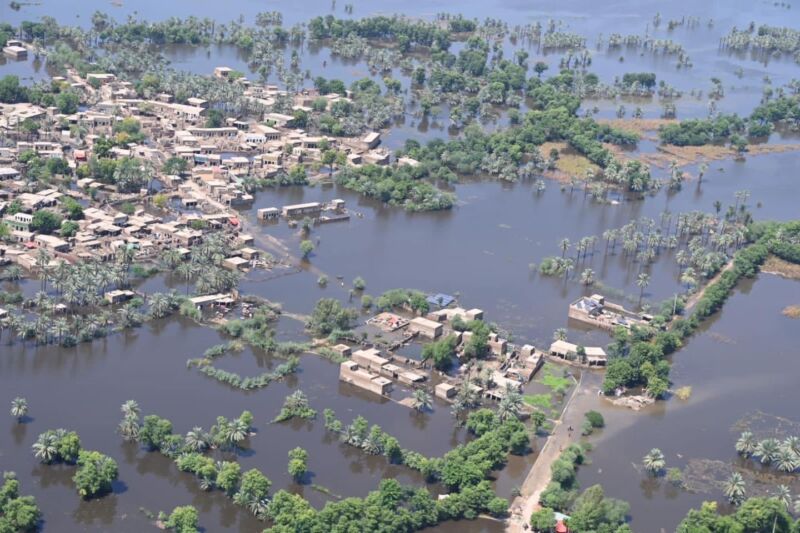Record monsoon flooding in Pakistan due to a confluence of factors

Enlarge / Flooding in Pakistan's Sindh province. (credit: Ali Hyder Junejo)
In August, Pakistan set destructive records as it averaged more than triple its normal August monsoon rainfall. In the southern provinces of Sindh and Balochistan, the number was seven to eight times the average. The resulting flooding killed around 1,500 people and displaced more than 30 million-a catastrophe of incredible scale.
Is this an event we expect a warmer climate to have influenced? As they often do, the World Weather Attribution team quickly analyzed this question and released the results on Thursday. Their peer-reviewed method for these rapid studies is to apply standardized analyses to both historical weather data and climate model simulations. The goal is to find out whether a given weather pattern is part of a long-term trend and then determine whether we expect such a trend to come as a result of human-caused global warming.
Lots of factorsThis event is more complex than something like a short-lived heatwave, given that it played out in waves over weeks and depends on highly variable monsoon patterns. Monsoon rains result from the seasonal transport of moist air over land combined with uplift that cools that air, wringing the moisture out of it. This pattern is hit-or-miss in Pakistan, as it often originates over eastern India and bends northward before it can reach Pakistan.